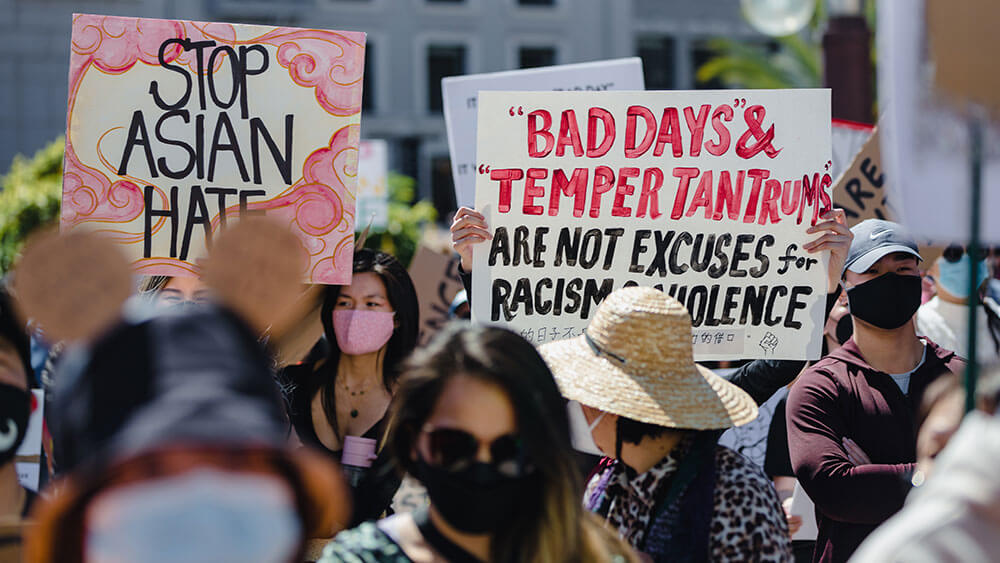
Asian American supporters in San Francisco demonstrate earlier this year against anti-Asian racism. Hollaback! and other nonprofits train participants in how to react to all forms of harassment. (Jason Leung on Unsplash)
During an April 5 online training jointly organized by the nonprofit organizations Hollaback! and Asian Americans Advancing Justice (AAAJ), the nearly 1,300 participants were polled about their experiences: 45 percent reported that they had witnessed or experienced anti-Asian verbal harassment, including slurs. And 71 percent said they had witnessed or experienced anti-Asian shaming in the form of “jokes.”
A much smaller fraction indicated that they have taken some action in the face of verbal harassment or shaming, said Hollaback!’s senior trainer, Dax Valdes, during the session, “Bystander Intervention Training to Stop Anti-Asian/American and Xenophobic Harassment.” “We freeze,” he said, “and we don’t know what to do.”
But allowing verbal disrespect to go unchallenged is dangerous, said Marita Etcubauñez, director of strategic initiatives at AAAJ, who co-led the session with Valdez. “Verbal harassment can lead up to more extreme behaviors — a culture that allows for disrespect allows for more extreme disrespect,” she said, citing such recent examples as violent attacks on Asian elders in Oakland, California, and shootings in Atlanta, Georgia.
RELATED: Combatting Racism Against Asian Americans in the Events Industry
One of the misconceptions about standing up to harassment is that direct confrontation is the only — or best — course of action, Valdes said. Hollaback! has developed tactics they call the 5Ds, and while direct confrontation is among them, the methodology also includes four indirect alternatives. One of the goals of the bystander training is to help people reframe how they think about intervening, Valdes said. Instead of thinking about responding as one big action, he said, “there are a series of smaller gestures we can call upon so that people know that we have their backs.”
The 5Ds, as described by Hollaback!, are:
- Distraction. You may be able to derail and interrupt an incident by engaging directly with the person being harassed. Pretend to be lost and ask for directions or create a distraction by deliberately spilling your coffee.
- Delegate by asking for help from a third party, like a store supervisor, bus driver, or a transit employee.
- Document the incident, if it’s safe. Always ask the person being targeted what they would like for you to do with the footage if you take a video. Don’t post it online without their permission.
- Delay your response if you can’t act immediately. Ask the person targeted if they are okay and they need support, such as accompanying them to their destination or sitting with them.
- Directly respond by naming what is happening or confronting the harasser. Direct intervention is risky and should be used with caution.
More information about the 5Ds is available on the Hollaback! website’s resources page, where you also can sign up for free, hour-long public trainings in how to intervene in anti-Asian harassment, as well as harassment of other groups.
The demand for such training is growing exponentially, said Hollaback!’s cofounder and executive director, Emily May. “Over the past month alone, we’ve had 125,000 people sign up for training and trained 40,000 people,” she said in April. “In contrast, we trained 25,000 people in the entirety of 2020.”
Barbara Palmer is deputy editor of Convene.
